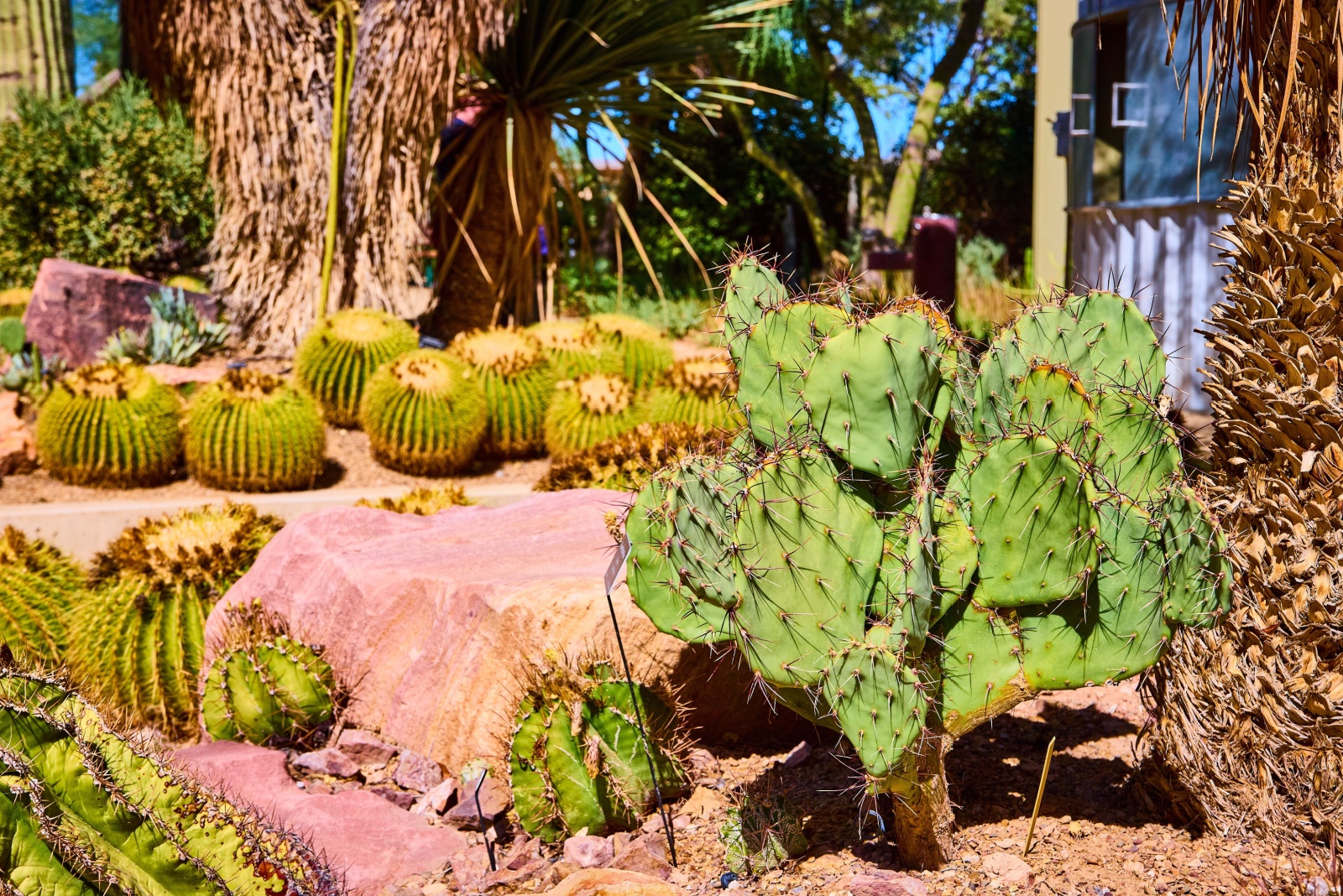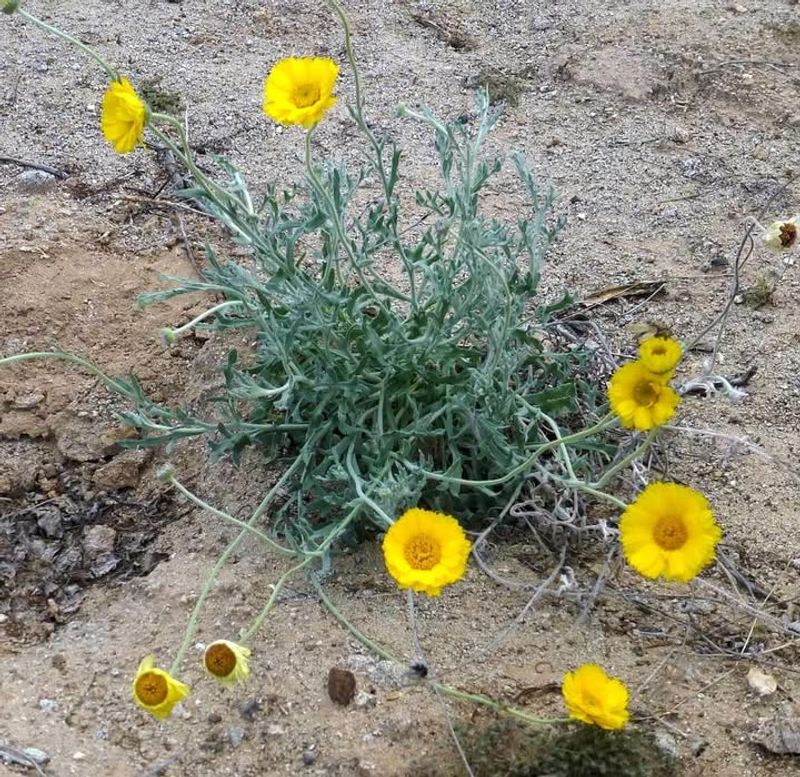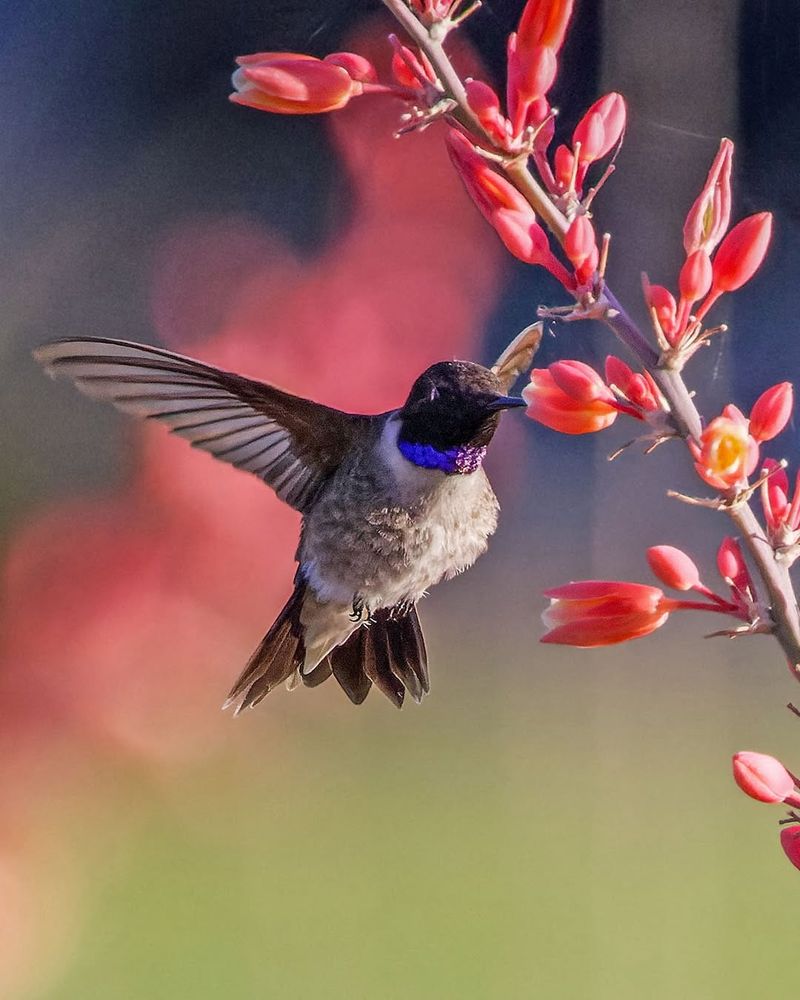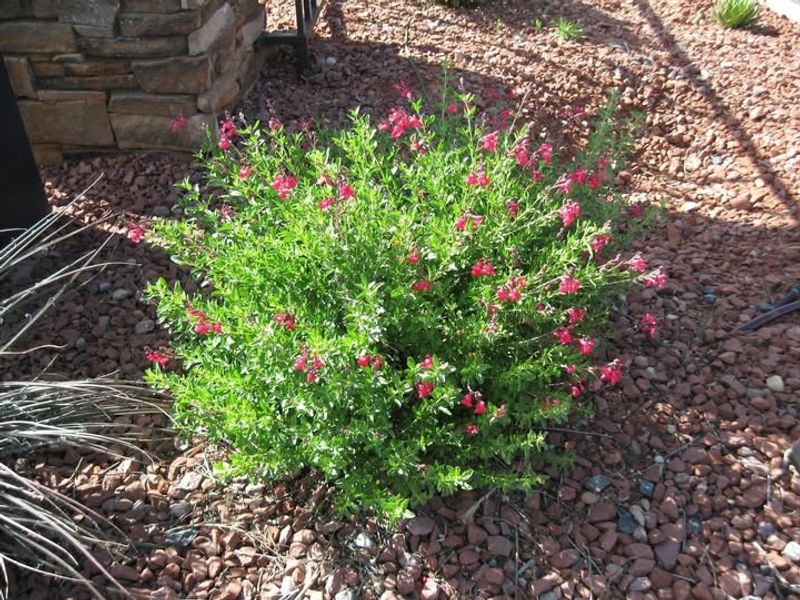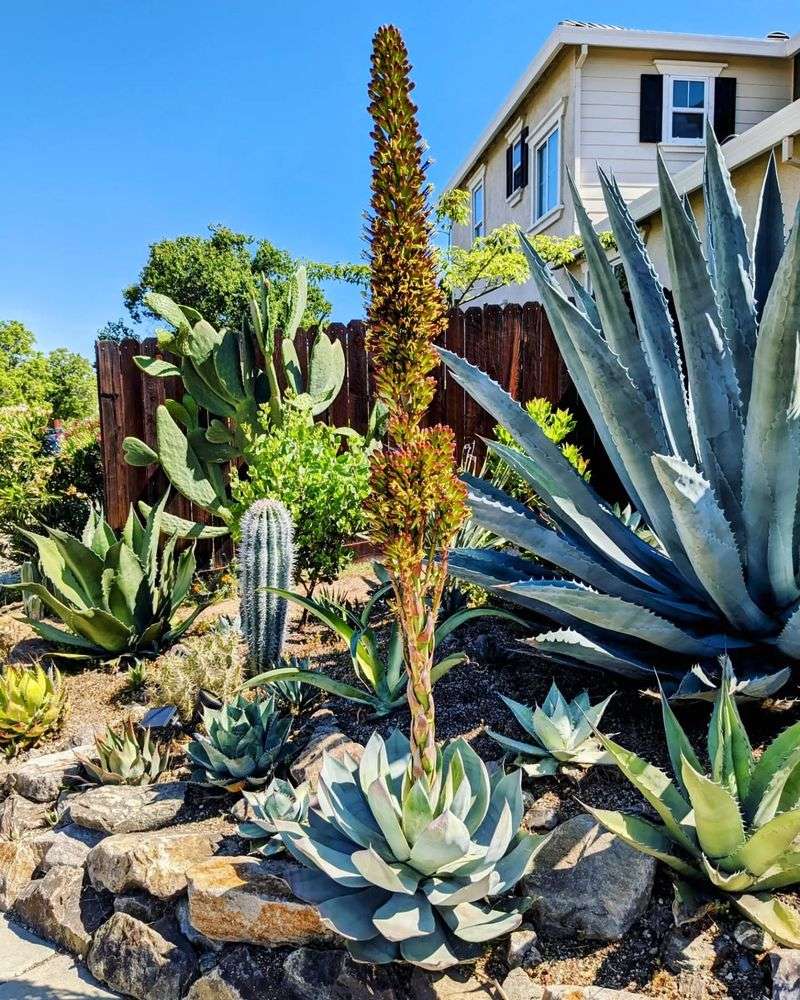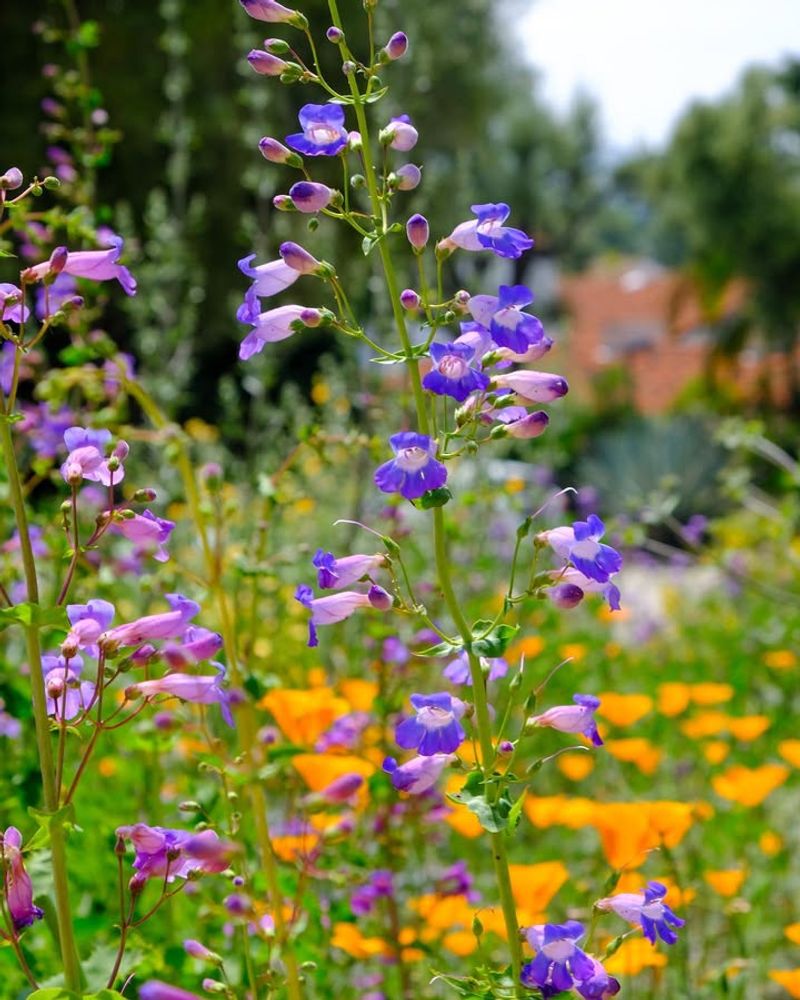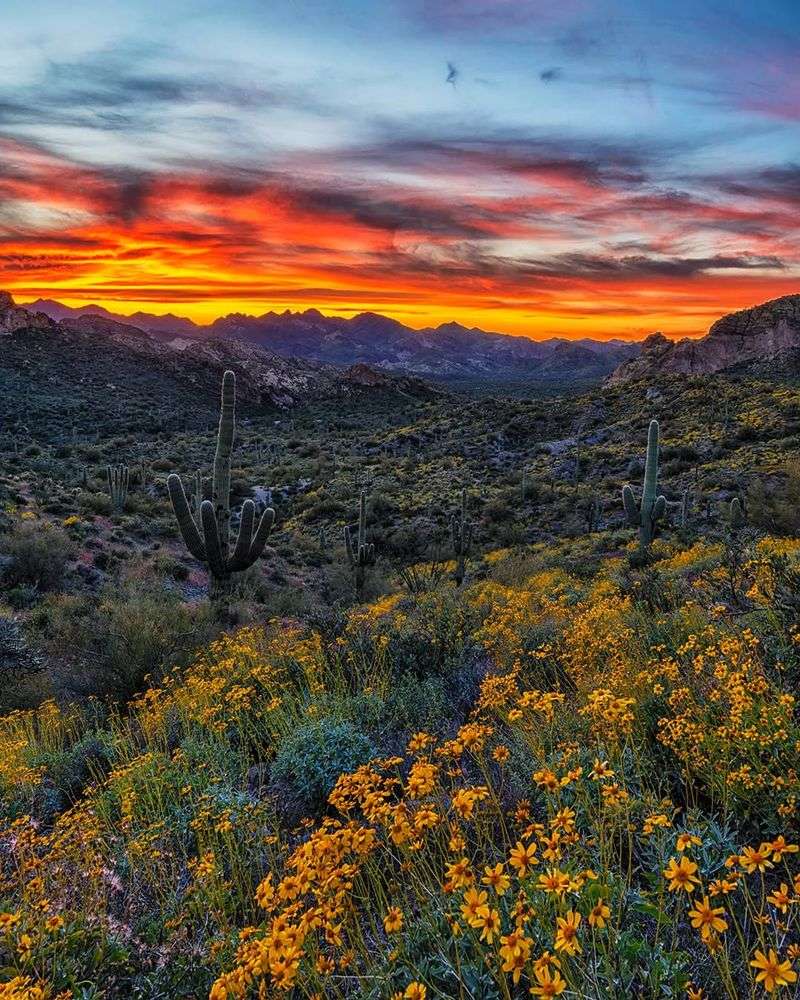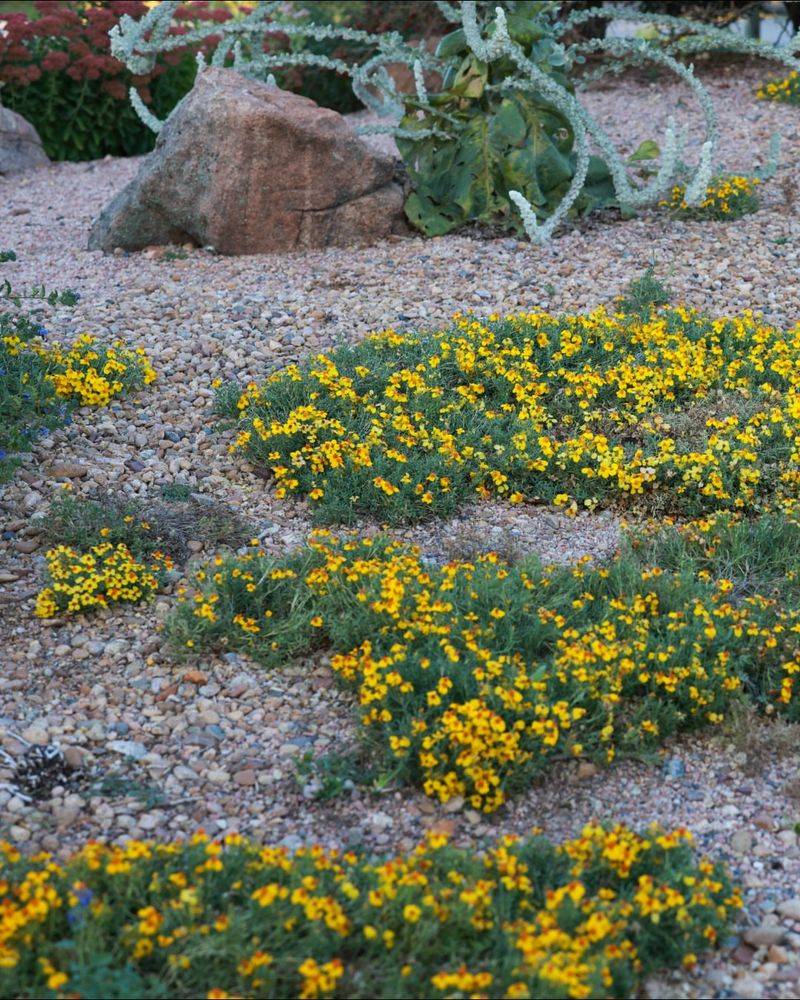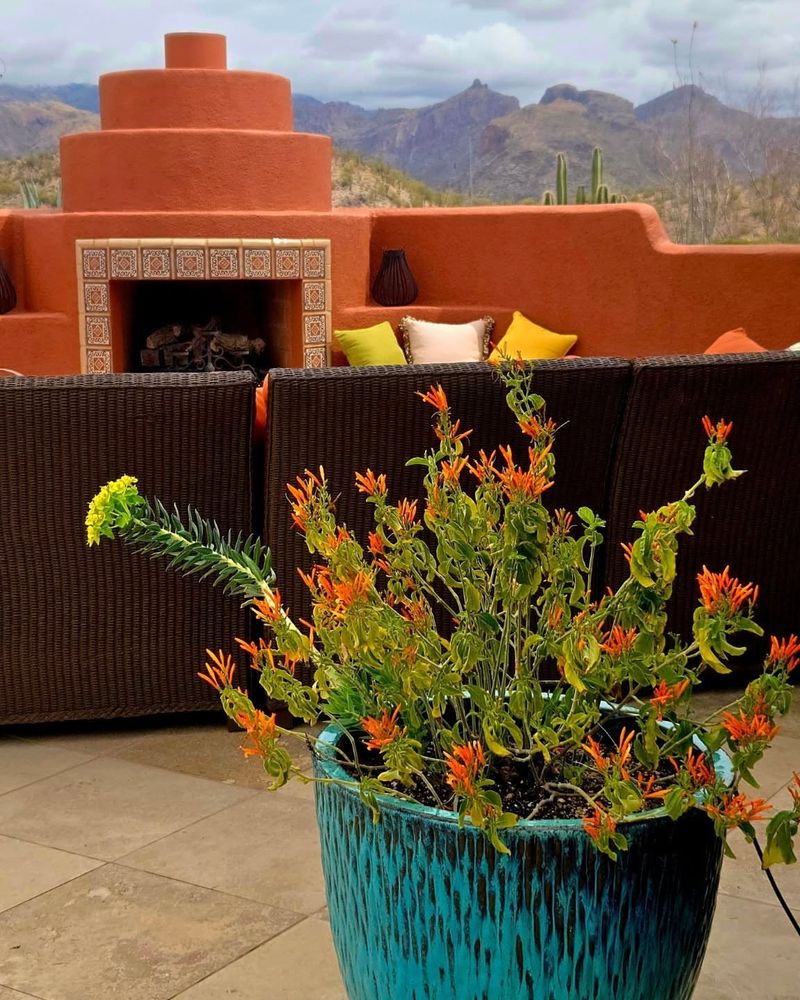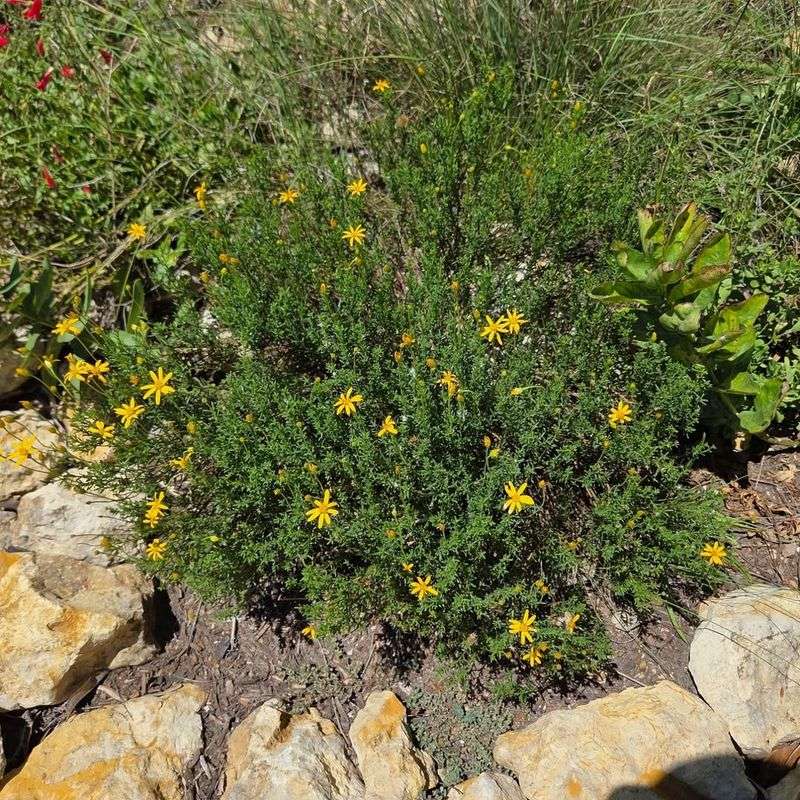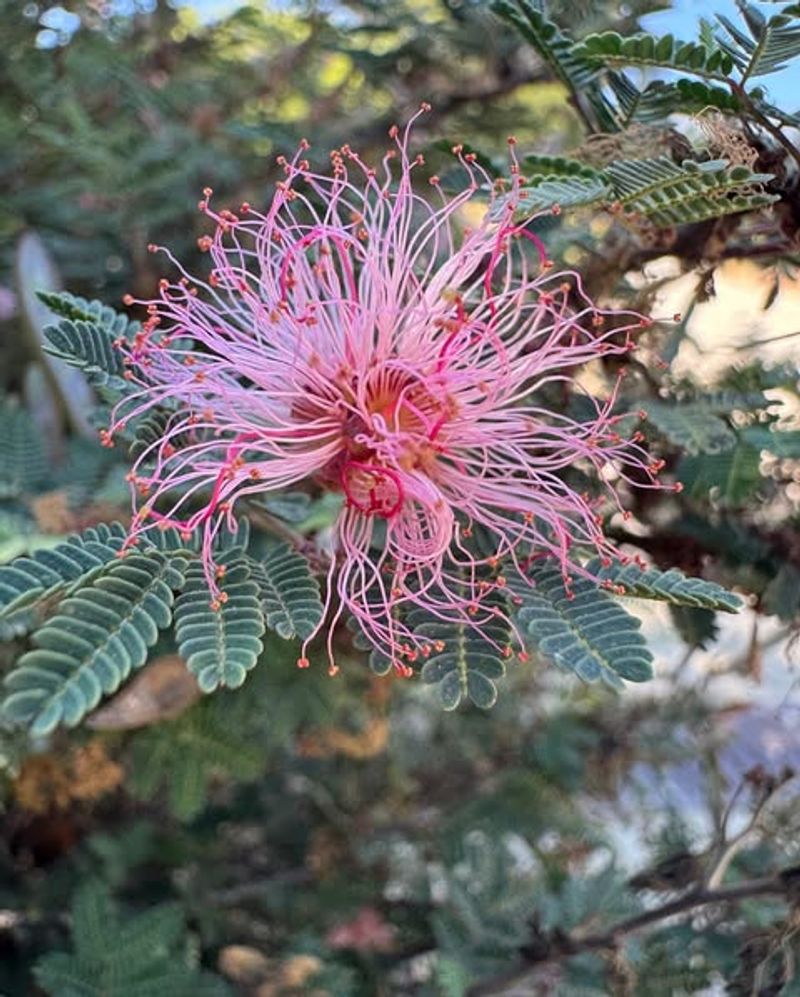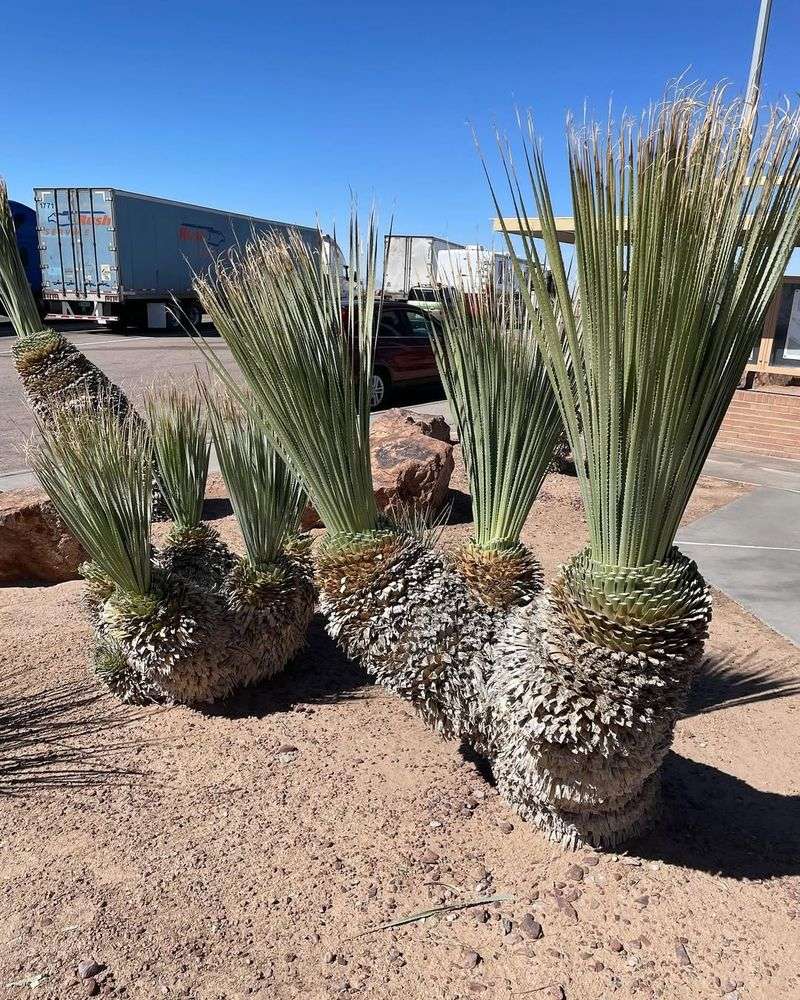Growing prickly pear cacti in your Arizona garden can be rewarding, but did you know the right companion plants can make them even more stunning? Choosing plants that thrive alongside your cacti creates a healthier, more beautiful desert landscape.
The perfect companions help conserve water, attract pollinators, and add color to your yard year-round.
1. Desert Marigold
Bright golden blooms make desert marigold a cheerful neighbor for your prickly pear. This native Arizona wildflower loves full sun and needs very little water once established, making it perfectly suited to desert life.
Butterflies and bees flock to these sunny flowers from spring through fall. Plant them about a foot away from your cactus to create stunning color contrast without crowding the roots.
Desert marigold reseeds itself naturally, so you’ll enjoy fresh blooms year after year with minimal effort.
2. Red Yucca
Tall coral-pink flower spikes shoot up from red yucca’s grass-like leaves, creating dramatic height next to sprawling prickly pear pads. Despite its name, this plant isn’t actually a true yucca but shares the same tough desert spirit.
Hummingbirds absolutely adore the tubular flowers that bloom from spring into summer. Red yucca tolerates extreme heat and cold, surviving temperatures down to zero degrees.
Space plants two to three feet from your cactus for best results.
3. Autumn Sage
Fragrant blooms in shades of purple, pink, red, or white make autumn sage an irresistible choice for desert gardens. Hummingbirds visit these flowers constantly throughout the growing season, bringing movement and life to your landscape.
This hardy perennial thrives in the same dry conditions your prickly pear loves. Trim back spent flowers to encourage more blooms and keep the plant looking tidy.
Autumn sage grows about three feet tall and wide, creating a colorful base around taller cacti.
4. Agave
Bold architectural leaves create striking contrast against the rounded pads of prickly pear. Agave plants come in dozens of varieties, from small rosettes to massive specimens several feet across.
Both plants share similar water needs and love rocky, well-drained soil. The sharp, sculptural quality of agave complements the softer texture of cactus pads beautifully.
Plant them at least three feet apart to give both room to grow. Did you know agave can live for decades before flowering?
5. Penstemon
Tubular flowers in brilliant shades attract hummingbirds like magnets to your garden. Penstemon species native to Arizona bloom at different times, giving you color from early spring through summer.
These wildflowers handle heat and drought like champions once their roots establish. Plant them in clusters near your prickly pear for maximum visual impact and pollinator appeal.
Most varieties grow one to three feet tall. Firecracker penstemon and Parry’s penstemon work especially well in desert landscapes alongside cacti.
6. Brittlebush
Silvery-gray foliage provides a cooling visual effect in hot Arizona gardens. Come spring, brittlebush explodes with masses of cheerful yellow daisy-like flowers that practically glow in the sunlight.
This native shrub grows naturally alongside prickly pear in wild desert areas, so they’re perfect companions. Brittlebush needs almost no water once established and thrives in poor, rocky soil.
The plant grows three to five feet tall and wide, creating a beautiful rounded shape that softens the cactus’s spiky appearance.
7. Desert Zinnia
Tiny white flowers with golden centers carpet the ground around your prickly pear from spring through fall. Desert zinnia stays low to the ground, making it an excellent living mulch that helps conserve soil moisture.
This Arizona native reseeds freely, filling in bare spots without becoming invasive. Butterflies love visiting these petite blooms throughout the warm months.
Plant desert zinnia between rocks and at the base of your cactus for a naturalistic look that requires virtually zero maintenance once established.
8. Mexican Honeysuckle
Bright orange tubular blooms appear almost year-round in mild Arizona winters, providing constant nectar for hummingbirds. Mexican honeysuckle creates a lush, tropical look while still tolerating desert conditions beautifully.
This evergreen shrub grows quickly to about three feet tall and wide. Plant it where it receives afternoon shade for best performance, especially in low desert areas.
Regular watering keeps Mexican honeysuckle blooming prolifically. Position it slightly away from your drought-loving prickly pear to accommodate its moderate water needs.
9. Damianita
Aromatic foliage releases a pleasant scent when brushed or crushed, adding sensory interest to your garden. Damianita forms neat, compact mounds covered with tiny golden flowers in spring and sometimes again in fall.
This small evergreen shrub grows only twelve to eighteen inches tall, making it perfect for planting in front of taller prickly pear. Damianita tolerates extreme heat and needs minimal water.
The fine-textured foliage contrasts beautifully with bold cactus pads, creating visual interest even when not blooming.
10. Fairy Duster
Fluffy pink pom-pom flowers look almost magical dancing above delicate fern-like leaves. Fairy duster blooms repeatedly throughout warm months, bringing constant color and pollinator activity to your landscape.
Hummingbirds, butterflies, and native bees all visit these whimsical flowers. This Arizona native shrub grows two to three feet tall and wide, creating a soft, airy texture.
Plant fairy duster where it receives morning sun and afternoon shade for longest bloom periods. It pairs wonderfully with the bold structure of prickly pear cacti.
11. Desert Spoon
Spoon-shaped leaves create a striking rosette that adds architectural drama to any desert garden. Desert spoon’s blue-gray foliage complements the green pads of prickly pear while providing contrasting form and texture.
Mature plants send up tall flower stalks that can reach fifteen feet high, creating spectacular vertical interest. Both plants thrive in rocky, well-drained soil with minimal water.
Space desert spoon at least four feet from your cactus to accommodate its eventual size. This native succulent handles full sun and reflected heat without complaint.

